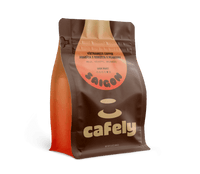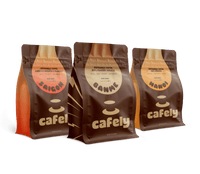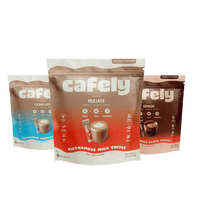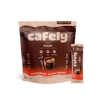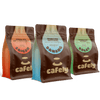Coffee isn’t just a drink — it’s a ritual, a rhythm, and a window into centuries of human connection.
More than 73% of U.S. adults drink coffee daily, but many people don’t realize how deeply cultural — and personal — brewing styles are around the world.
Globally, over 2 billion cups of coffee are consumed every day. But how those cups are prepared tells vastly different stories.
From countries that drink the most coffee to regions that treat brewing as a ceremony, coffee reflects far more than caffeine needs — it speaks of geography, history, and shared experience.
12 Coffee Traditions That Will Change the Way You Drink Coffee
Below, we explore 12 traditional coffee brewing methods that will not only expand your palate but also transform the way you think about your morning cup.
1. Ethiopia: The Birthplace of Coffee

Ethiopia is where coffee began — and to this day, its preparation remains one of the most sacred and social rituals in the world.
The Ethiopian coffee ceremony is an immersive, often hour-long experience involving the roasting of green beans over a flame, hand-grinding with a mortar and pestle, and slow brewing in a jebena, a traditional clay pot with a long spout.
Coffee is served in three rounds — abol, tona, and baraka — each weaker than the last, symbolizing hospitality, peace, and friendship.
2. Turkey: The Art of Turkish Coffee
In Turkey, coffee isn’t filtered — it’s brewed unfiltered in a cezve with sugar, a small copper pot. Once it froths up, it’s poured directly into the cup — the grounds settle at the bottom.
This method produces a bold, rich flavor and is often accompanied by Turkish delight or dates. The ritual doesn't end with the last sip: fortune-telling from coffee grounds, known as tasseography, adds a mystical layer to the experience.
What makes Turkish coffee unique isn’t just the brewing style — it’s the cultural significance behind every cup.
If you're curious to try it yourself, here’s a quick guide on how to drink Turkish coffee the traditional way.
3. Italy: Espresso Culture
Espresso is more than a brewing method in Italy — it's a way of life. It's traditionally brewed under high pressure in small 1-oz shots and forms the base for drinks like cappuccino, macchiato, and ristretto.
Italians typically enjoy espresso standing at the bar, quickly and without milk, after 11 AM. The culture prioritizes quality, brevity, and daily rhythm.
4. Japan: Precision in Pour-Over
In Japan, coffee is treated with the same intentionality as tea ceremonies. Pour-over methods are prized for their clean, nuanced flavors and require precision, patience, and the right tools.
One of the most iconic Japanese methods uses the Hario V60 — a cone-shaped dripper that allows fine control over water flow, temperature, and timing.
Paired with Japan’s quiet kissaten cafés, pour-over coffee becomes more than a drink. It’s a meditative practice — slow, thoughtful, and designed to be savored.
5. Sweden: The Fika Tradition
In Sweden, coffee isn’t rushed — it’s relational. Fika (pronounced fee-ka) refers to a daily ritual of taking a break with coffee and pastries, usually with others. It's both a workplace staple and a social anchor.
Traditional Fika includes buns like kanelbullar (cinnamon rolls) and strong black coffee, served in minimalist Scandinavian settings that favor warmth and coziness.
Fika isn’t about caffeine — it’s about connection. And it’s a powerful reminder that how we take our breaks matters just as much as how we brew.
6. Vietnam: Iced Milk Coffee

Vietnamese iced coffee (cà phê sữa đá) blends dark-roasted robusta beans, condensed milk, and ice for a drink that’s both intense and satisfyingly sweet. Its signature comes from the phin filter — a stainless-steel drip device that slowly brews the coffee directly into a glass layered with sweetened condensed milk.
This slow-drip method, introduced during French colonial rule, defines Vietnamese coffee culture and history, giving each cup time to steep and deepen in flavor.
Curious which beans are best? Check out our list of the top Vietnamese coffee brands worth exploring.
7. France: Café Culture
In France, coffee is about ambiance as much as it is flavor. Whether it’s a petit noir after dinner or a café crème mid-morning, the emphasis is on slow, scenic sipping, often in bustling cafés with sidewalk views.
Cafés double as social hubs, creative corners, and contemplative retreats — a space where coffee blends with conversation, literature, and leisure.
Coffee here isn’t to-go — it’s to be experienced, ideally with a croissant and a page-turner.
8. Australia: The Flat White Phenomenon
The flat white — a creamy blend of microfoamed milk and espresso — was born in Australia and has since gained international fame. Unlike lattes, it’s smaller, stronger, and smoother, letting the coffee’s flavor shine through.
Australia’s café scene, especially in cities like Melbourne, is among the most innovative in the world. Baristas here treat coffee like a culinary art, and the culture has helped elevate global standards.
Flat whites now appear on café menus worldwide — but in Australia, they’re still best enjoyed where they began: fresh, foamy, and fiercely flavorful.
Learn how to make a flat white coffee so you can experience that tradition.
9. Greece: Frappé & Socializing
Greece gave the world the frappé, a frothy iced drink made by shaking instant coffee, water, and sugar — and it’s everywhere in Greek social life.
Invented by accident in the 1950s, frappés became a warm-weather staple, often served in tall glasses with ice and milk. They’re quick to make, strong in flavor, and perfect for slow afternoons at cafés.
This differs from the version that we get at coffee shops in the US (such as Starbucks’ blended iced coffee drinks like frappuccinos).
10. Saudi Arabia: Qahwa & Hospitality
Saudi coffee, or qahwa, is more about tradition than caffeine. Brewed with cardamom, saffron, and cloves, it’s served in small cups alongside dates as a symbol of hospitality and generosity.
The ritual is deeply tied to cultural identity, particularly in gatherings and family visits. The coffee is brewed in a dallah pot and poured with care — always from the right hand — into small, handle-less cups.
Every element, from spices to serving etiquette, reflects respect, warmth, and communal values.
11. Mexico: Café de Olla

Café de olla (literally "coffee from the pot") is a rustic Mexican brew made with cinnamon, piloncillo (unrefined cane sugar), and cloves, steeped in a clay pot that adds earthy depth to the flavor.
It’s especially popular in rural communities and during holidays, where it warms hands and spirits alike.
This drink isn’t just for flavor — it’s a nod to heritage, warmth, and the generations of abuelas who’ve stirred it over open flames.
12. Senegal: Café Touba
In Senegal, coffee meets spice and spirituality in Café Touba, a blend of coffee and grains of Selim (a pepper-like spice). Originally created by Sufi religious leaders, this drink was intended to awaken both body and spirit.
Today, it’s a popular street beverage — served in tiny cups by roadside vendors and sipped communally. The flavor is smoky, spicy, and wholly unique.
It’s coffee, yes — but also meditation, culture, and connection in every sip.
How Coffee Shaped Global Culture, Art, & Revolution
Coffee is more than just a beverage — it's a cultural catalyst. For centuries, it has brewed ideas, change, and creativity.
From 17th-century revolutionaries to modern poets, painters, and protestors, the coffeehouse has served as a second home for the world’s thinkers, rebels, and creators.
1. Coffeehouses as Hubs of Political Discourse & Revolution
Throughout history, the aroma of coffee has drifted through the rooms where revolutions were born.
Enlightenment-Era Europe
In 17th and 18th century Europe, coffeehouses exploded in popularity, particularly in England, France, and Germany.
Unlike taverns and alehouses, these establishments offered a sober space for people to gather and talk politics, science, and philosophy.
London’s coffeehouses were nicknamed “Penny Universities,” where for the price of a cup, you could learn about the latest scientific breakthroughs or political gossip.
These coffee-fueled conversations helped energize Enlightenment thinking — contributing to intellectual shifts that fueled revolutions in America and France.
Thinkers like Voltaire and Rousseau were regulars at Parisian cafés, where abstract ideals turned into world-altering manifestos.
Related reading: Coffee Statistics: How the World Consumes Coffee Today
Ottoman Empire's Democratic Brew
Even earlier, during the 16th century, the Ottoman Empire’s coffeehouses became cultural epicenters.
These spaces, often referred to as “schools of the wise” or “penny universities,” provided an unprecedented opportunity for scholars, merchants, and the working class to discuss theology, governance, poetry, and philosophy — regardless of status.
Sufi mystics also embraced coffee, using it to aid concentration during late-night dhikr (remembrance) rituals. Over time, coffee became both a sacred stimulant and a tool for social cohesion.
Modern Movements: From Arab Spring to Civil Rights
Fast-forward to the 21st century, and the café continues to be a strategic setting for societal transformation.
During the Arab Spring, cafés in Egypt and Tunisia were not just places to sip espresso — they became informal planning rooms where activists discussed tactics and spread messages online.
Similarly, in the United States, coffeehouses have long been associated with civil rights and anti-war activism, especially during the Vietnam War. GI coffeehouses near army bases offered soldiers a space to voice dissent, share anti-war literature, and organize peaceful protests.
2. Coffee’s Role in Literary Circles
Writers have always had a special relationship with coffee. For many, the cup beside their typewriter or journal is a creative companion.
European Literary Cafés
Throughout the 19th and 20th centuries, cities like Vienna, Paris, and Prague became hotspots for literary culture — and coffeehouses were at the heart of it all.
In Vienna, cafés like Café Central were frequented by literary legends including Freud, Trotsky, and Stefan Zweig.
In Paris, artists such as Ernest Hemingway and Jean-Paul Sartre spent long hours at Café de Flore and Les Deux Magots, sipping strong black coffee while discussing existentialism and world affairs.
These cafés were quiet sanctuaries and loud salons — places to brainstorm, debate, and dream.
Coffee as Literary Symbol
Beyond being a writer’s companion, coffee has become a literary symbol. From the bustling Parisian cafés in Balzac’s novels to the contemplative cups in modern poetry, coffee is a metaphor for connection, routine, longing, and clarity.
Whether it’s the early-morning brew or the midnight refill, coffee often symbolizes focus, thought, and the rhythm of life — a thread woven through stories both fictional and real.
3. Coffee in Visual Arts

Artists have long been drawn to coffee — as a subject, a setting, and a symbol.
Café Life in Paint
Famous painters like Vincent van Gogh and Paul Cézanne captured the essence of café culture in their works.
Van Gogh’s “Café Terrace at Night” radiates warmth and quiet social energy, while Cézanne’s pieces reflect the comfort and solitude found in a humble cup of coffee.
Later, impressionist and modernist artists followed suit, painting cafés as reflections of urban life, human connection, and social observation.
Coffee as a Visual Symbol
In many of these works, coffee is more than a drink — it's a stand-in for themes like community, ritual, comfort, and routine. Whether shared with others or sipped alone, it’s a moment suspended in time — visually and emotionally.
This sentiment still resonates in today’s digital art and photography — where the #coffeeaesthetic continues to thrive on platforms like Instagram and Pinterest.
4. Coffee & Music
Coffee’s reach even extends into the realm of music.
Bach’s “Coffee Cantata”
In the 18th century, composer Johann Sebastian Bach wrote the “Coffee Cantata” — a playful satirical piece that tells the story of a young woman addicted to coffee. Her father threatens to withhold marriage approval unless she gives up the habit.
The cantata, which premiered in Leipzig coffeehouses, reflects both the growing popularity and the controversy around coffee in Bach’s time. It was seen as both a liberating pleasure and a social vice — much like how people debate energy drinks and caffeine today.
Coffee not only energized minds — it inspired melodies.
5. Coffeehouses as Centers for Social Movements
Beyond political upheaval and artistic expression, coffeehouses have also served as safe havens and organizing spaces for marginalized voices.
Feminist & LGBTQ+ Communities
During the 20th century, feminist collectives and LGBTQ+ groups often gathered in cafés when few other safe public spaces existed.
These spaces nurtured the early seeds of activism and self-expression, giving individuals room to connect, share ideas, and organize community events.
Coffeehouses provided a unique combination of anonymity and intimacy — a place to be seen and heard.
Anti-War Hubs
In the U.S., GI coffeehouses emerged during the Vietnam War as underground gathering points for soldiers disillusioned with the war.
They weren’t affiliated with the military but became powerful grassroots outlets where service members could find solidarity and emotional support, access anti-war materials, and question authority in a safe environment.
These venues played a critical role in building morale among peace activists and soldiers alike, further showcasing coffee’s unexpected place in shaping cultural resistance.
The Culture in Your Cup
The next time you take a sip of coffee — whether it's a slow-brewed Vietnamese iced milk coffee or a robust Turkish coffee — remember, you're participating in a centuries-old global tradition.
Coffee has never been just about caffeine. It’s been a conduit for change, a spark for creativity, and a space for human connection.
Whether fueling revolutions, shaping art, or comforting hearts, coffee's impact stretches far beyond the mug.
As you explore traditional coffee brewing methods and the cultures that created them, you’re not just learning to brew — you’re learning to see the world through its steam.
FAQs: Global Coffee Traditions
Let’s address the questions most have about global coffee traditions:
1. What is the Oldest Known Coffee Tradition?
The Ethiopian coffee ceremony is the earliest known tradition. It involves roasting, grinding, and brewing beans in a clay pot called a jebena. The process is social, spiritual, and deeply symbolic.
2. How is Turkish Coffee Different from Regular Coffee?
Turkish coffee is simmered, not brewed. The grounds are unfiltered, yielding a thick, strong cup with a foamy top. It’s often served with Turkish delight — and followed by fortune-telling with coffee grounds.
3. Why Does Vietnamese Coffee Use Condensed Milk?
During French colonial rule, fresh milk was scarce, so sweetened condensed milk became a substitute. Today, it’s a signature ingredient in Vietnamese iced coffee.
4. What is Café Touba?
Café Touba is a Senegalese coffee infused with grains of Selim (Guinea pepper). Originally a Sufi spiritual drink, it’s known for its warming, peppery flavor and street-side preparation.
5. Is Fika Just a Coffee Break?
Not at all. In Sweden, fika is a daily ritual of slowing down, sharing conversation, and enjoying coffee with something sweet. It’s more about connection than caffeine.
6. How Do You Make Café de Olla?
Simmer fine grounded coffee with cinnamon and piloncillo (raw cane sugar) in a traditional clay pot. The result is earthy, spiced, and often enjoyed in rural Mexico.
7. What Makes Japanese Pour-Over Unique?
Japanese pour-over brewing emphasizes slow, deliberate technique. Devices like the Hario V60 allow for precise control over flow and flavor, turning coffee into an art form.
8. Why Is Saudi Qahwa Served With Dates?
Dates provide natural sweetness to balance the bitterness of spiced Saudi coffee. Serving them together reflects hospitality and respect in Arab culture.
9. What is the Difference Between Indian Filter Coffee & Espresso?
Indian filter coffee is made using a drip filter, often blended with chicory. It’s milkier and less intense than espresso, traditionally served in a metal tumbler-dabara set.
10. Can I Try These Traditions at Home?
Yes! Many methods need just a few tools — like a cezve or phin. Our guide to traditional coffee brewing methods and product links will help you get started.
